Introduction
Operations management (OM) is the regulation of business procedures inside an enterprise to achieve the best degree of effectiveness achievable. It focuses on transforming labor and raw materials into merchandise and offerings as effectively as feasible to increase a company’s profit (Mišić & Perakis, 2020). To operate a thriving record company, for instance, CC requires a group of skilled employees. Regarding the success of a record company, music firms should consider first and foremost great performers, dedicated leaders, and savvy A&R (Slack & Brandon-Jones, 2019). If those roles are rhythm pianist and lead vocalist for the music label’s group, the operations supervisor should be copied on the message. CC uses a reconfigurable manufacturing theory of operations management that incorporates production techniques designed to accommodate rapid structural, hardware, and software component modification. Therefore, this enables systems to swiftly adapt their industrial capacity and their capacity to work appropriately in reaction to the marketplace or internal changes (Stevenson, 2009). This report aims to provide Charles and Christina (CC), both classical musicians, with at least two Business Process Models (BPM) that capture their current and planned business operations.
Process Design and Functional Layout
In an industrial setting, machinery and equipment are sometimes placed in a single line based on the chronology of requirements needed for the item. Under line arrangement, machines are arranged sequentially. In a paper mill, for example, bamboos are placed into the device at one extreme, and paper is produced at the other. A functional layout defines a situation where instruments that perform activities are arranged in a specific department. For instance, equipment that performs casting operations is positioned in the casting division. Therefore, the devices are set in the plants per the industrial layout’s numerous processes. CC Music utilizes a functional structure where machines of a similar type are arranged together in one place. The emphasis is on general-purpose devices, such as the work has to be allocated to each department so that no machines are chosen to do as many different jobs as possible. The reconfigurable Manufacturing theory will help CC change hardware and utilize capabilities in all institutional and functional contexts. Thus, this enables the rapid modification of manufacturing capacity and performance in reaction to external market or legislative issues.
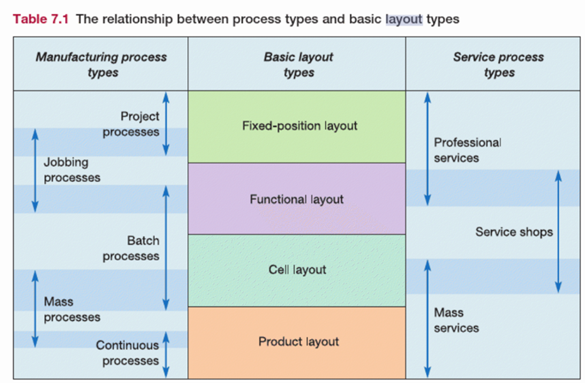
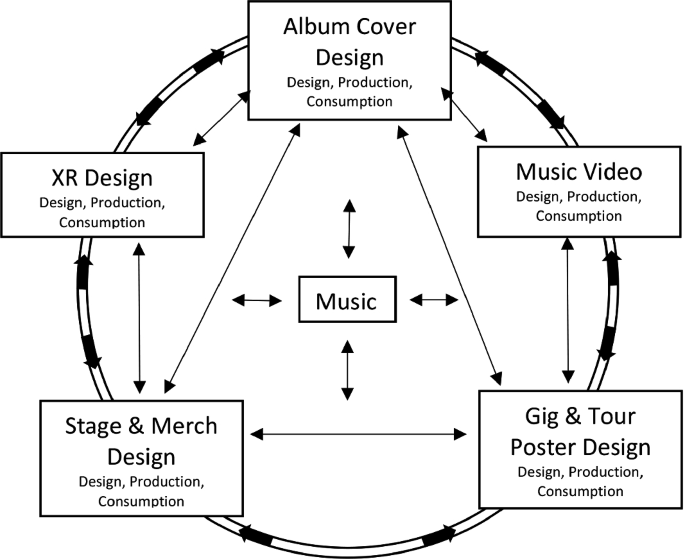
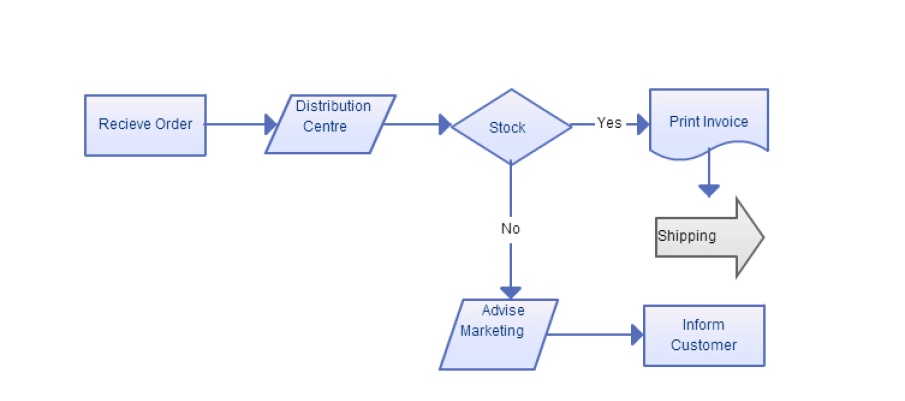
PART B1: Business Process Modeling (BPM) Notation and Strategy Analysis
Using standardized components to graphically illustrate a business operation is one way to define BPM notation. It is formally defined as a collection of graphical elements and rules that specify the possible relationships between those items (Awadid & Nurcan, 2019). The objective of business process paradigm notation is to provide a framework that can aid businesses in comprehending their internal processes and procedures through graphical representations. The frameworks enable companies to accurately identify their deficiencies and solve them as soon as possible. The BPM nomenclature comprises fundamental components such as flow components, linking items, swim lanes, and artifacts (Awadid & Nurcan, 2019). The flow items are happenings, which are depicted as spheres, operations, represented as rectangles with circular shapes, and gates, described as diamonds.
The linking elements are the connections that link the series flow illustrated by the solid arrows, the communication flow represented by the dashed line, and the relationships. The Swim lanes are the basins and stripes indicated by the visual enclosure and sub-division of the pool in the illustration (Awadid & Nurcan, 2019). The BPM notation has a more significant benefit over other paradigms due to its systematic, ordered layout. Due to its popularity among industry professionals, interaction is simplified (Awadid & Nurcan, 2019). In summary, the BPM notation highlights the importance of brief, clear graphics in a strategy and applying sophisticated prediction to achieve exact objectives. As illustrated, below are the two BPM models for CC business processes.
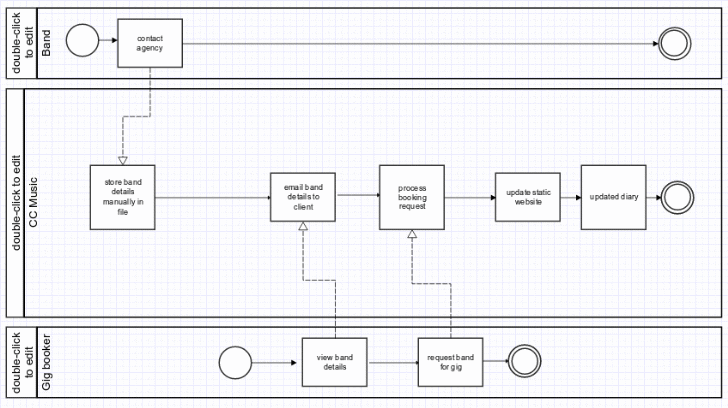
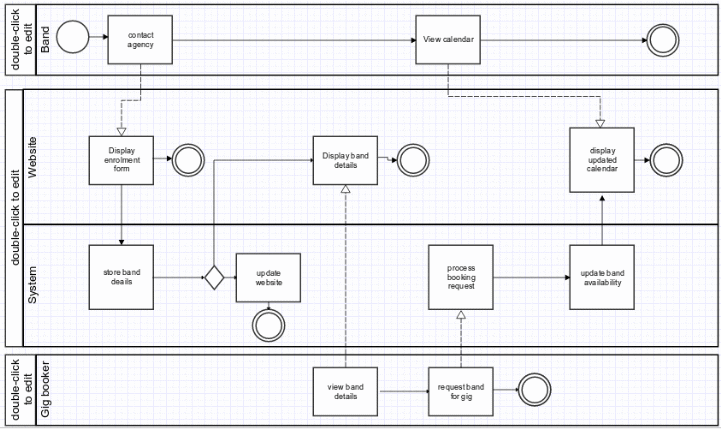
Strategic Analysis
PESTEL Analysis
Political Factors
Driven by political unpredictability in Europe and worldwide, the prospects for the media and film sector’s development have been drastically reduced. Brexit, the United Kingdom’s exit from the European Union, spurred nationalist movements in France, Italy, and the Netherlands, among others. Therefore, CC Music must consider the above when interacting with European citizens and preserving their information. Finally, Brexit has caused enterprises to re-evaluate their business strategies and seek to improve operational effectiveness.
Economic Factors
Internationally, the entertainment and media business is projected to endure a substantial downturn and sluggishness. The yearly growth of the music and film business is projected to increase by just 4.2% over the next five years, a decrease from the 4.4% growth rate observed in 2015 (Ruiz et al., 2020). Such a minimal pace of development will bring the sector underneath the international GDP level, thereby reducing the industry’s global consumer base. Therefore, this is terrible news for CC Music, as the film and media marketplace is becoming challenging to penetrate due to the sector’s declining market share and waning enthusiasm.
Social Factors
A rising group of customers, millennials, has emerged due to tremendous social and economic development. On a worldwide platform, media and entertainment have become apparent that the youth is driving the bulk of sectors. Contrasted to earlier consumers, boomers are less likely to invest in musical performances (Ruiz et al., 2020). Instead, millennials favor spending finances on experiences like dining out and traveling. These new groups also cherish communicating directly with content creators. They are the generation most inclined to stream music and videos online and receive market information and events via social platforms such as Facebook, Twitter, Instagram, and Snapchat.
Technological Factors
Technology is critical to the growth of the media and entertainment industries. From marketing strategies to delivery methods, innovation and particularly technological trends will illuminate the path for the entertainment industry. As the number of media and networks has expanded, so have competitive business environments; the music and film industries can no longer thrive solely based on their quality. This sentiment was mirrored and developed by Ruiz et al. (2020), who stated that enterprises in the media and entertainment field could not exist on three prior income streams and rivalry, including infrequent consumers and service targeting to average users, and lesser premium viewers. Companies must distinguish between casual spectators and true fans to analyze various portions to improve targeted abilities and customer insights.
Environmental Factors
Environment regulations and security agencies play a crucial role in upholding standards. In developing nations, these authorities stall the procedure to solicit bribes (Ruiz et al., 2020). The CC Music record label should be informed of such activities in a country. The extent of sustainable consumption engagement reduces the environmental risk to CC music. Therefore, this will enable CC music record to build eco-friendly products and avoid PR bottlenecks.
Legal Factors
CC music should be aware of the nation’s safety standards and what they must do to conform. Before market entry, CC music should undertake extensive study since health and wellbeing vary in various countries. CC music should consider the region’s commitment to the legal system and whether the jurisdiction’s common law is comparable to all domestic or foreign entities. If the judicial procedure is arbitrary, CC music cannot be confident in the verdicts. In addition, the employment legislation of a state and its compatibility with the business strategy of CC music are crucial legal considerations.
SWOT Analysis
Strengths
- Non-family advantages.
- Personnel with deeper knowledge base.
- Positive reputation.
Weaknesses
- Low business acumen by CC staff.
- Poor technological understanding.
Opportunities
- Clients’ innovative expertise.
- Online streaming.
- Worldwide availability of internet.
Threats
- Intense rivalry.
- Global customer base.
- Further technological development.
- Legal uncertainties.
SWOT Analysis Discussion
As a family-run organization, CC music enjoys advantages that non-family-operated enterprises do not. It is commonly believed that family-owned firms work more efficiently and are more resilient than their competitors. Moreover, family companies generally function efficiently (Benzaghta et al., 2021). CC Music is led by persons with a profound knowledge of music due to their distinct academic backgrounds in music. CC Music has garnered a positive reputation, with a series of actions keen to be represented by them owing to their exceptional past work.
Unfortunately, CC Music employees lack actual music business knowledge, as most of their understanding is of an intellectual character. Therefore, this is a drawback until additional training and experience are gained. In addition, CC Music lacks technological industry understanding, which hinders the corporation. Since consumers are now more technologically savvy, more streams are available to reach them. Thus, this can result in superb customer communication, creating a solid connection between the organization and the client. Technology has propagated globally due to eliminating impediments and the accelerating growth of Internet usage worldwide. As a result, enterprises have access to international markets and purchaser shares.
The marketplace for television and film is very aggressive and overcrowded, making it challenging for CC Music to penetrate and thrive. Global customer base. The market is facing a global decline, and although CC Music has a niche in “Northern Soul,” the customer base slowdown poses a threat to the firm. Many sectors, notably the music and film industry, have been affected by the geopolitical unpredictability brought on by Brexit. Regardless of Brexit, CC music will be required to comply with the European Union’s GDPR when interacting with European people and the modifications made to the UK Information Security Act.
PART B2: Open Source Software Comparison
The choice to select the Customer Relationship Management (CRM) program has taken into consideration the changes in the operational context based on the results of the previous strategic analysis. In addition, the five criteria against which the software products will be evaluated were determined based on Mattivi et al.’s (2018) suggestions. Therefore, this is evident in the variety of capabilities offered by the great bulk of presently offered CRM systems, which are more suited to larger organizations. Following this, a comparative evaluation will be done between SugarCRM, one of the most renowned and extensively used CRMs, and EspoCRM (Commercial programs) and other CRMs suited for smaller organizations. Vtiger and Concursive are the two off-the-shelf customer relationship management systems.
Table 1: A Critical Comparison of Sugar CRM and EspoCRM with Concurisve and VTiger
Recommendations
Accordingly, the selected business system pertains to customer relationship management (CRM). It is believed that for CC Music to develop and thrive, it must pay attention to the current industry changes and strengthen its ties with existing customers. In this regard, the first graphic illustrates the general lack of engagement inside the corporate setting of CC Music. The suggested new system optimizes this specific function, minimizing waiting periods associated with contact and contract transfers and resulting in a proactive information transfer process (Hesmondhalgh & Meier 2018). In addition, bands may now examine calendar dates, giving them a level of involvement and power not previously available, with CC Music maintaining ultimate flexibility over the system.
Concursive, VTiger, and Sugar are open-source programs evaluated for customer relationship management. Sugar CRM and Concursive continue to be on the more expensive end of the scale, while VTiger lacks the brand familiarity of the others. As a result, it is advised that the organization use EspoCRM, which will optimize their whole customer engagement process (Ntantogian et al., 2019). EspoCRM seems to be a good fit for smaller firms, but Sugar is an extensively used system across several sectors. A significant number of Sugar’s features will not certainly apply to CC Music.
Software deployment is the execution of a program on a server or computer. It can be broken down into three phases: initial, validation, and actual installation. During the preparation phase, CC Music must collect all the scripts that will be launched and any additional frameworks, application settings, or materials required for the application to run. Before an upgrade can be sent to the manufacturing environment, it should be delivered to a test server and submitted to a predefined set of automated tools. Before releasing the modification to the entire system, CC Music should review the effectiveness and fix any faults or inconsistencies. Once a patch has undergone exhaustive testing, it can be applied to the production system. Before updates can go live, CC Music may execute a set of routines to modify critical datasets. The final step is to examine for problems and errors on the live server to verify that users engaging with the new update have the best possible experience.
Conclusion
CC Music has accumulated market knowledge and expertise over the previous several years, yet, the industry’s course over the past decade poses a significant obstacle to the company’s development. Thus, this primarily comprises changes in customer tastes and behavior and technological advancements. Therefore, it is suggested that CC Music use EspoCRM, which offers all the qualities and features necessary to aid the firm’s customer relationship efforts. Furthermore, given its usability and consistency with the organization’s current requirements, EspoCRM appears as the superior option.
Reference List
Awadid, A., & Nurcan, S. (2019) ‘Consistency requirements in business process modeling: A thorough overview.’ Software & Systems Modeling, 18(2), pp.1097-1115. Web.
Benzaghta, et al. (2021) ‘SWOT analysis applications: An integrative literature review.’ Journal of Global Business Insights, 6(1), pp.55-73. Web.
Hesmondhalgh, D., & Meier, L. M. (2018) ‘What the digitalization of music tells us about capitalism, culture and the power of the information technology sector.’ Information, Communication & Society, 21(11), pp.1555-1570. Web.
Lee, C.K.H. (2018) ‘A review of applications of genetic algorithms in operations management.’ Engineering Applications of Artificial Intelligence, 76, pp.1-12. Web.
Mattivi, et al. (2019) ‘TWI computation: A comparison of different open source GISs.’ Open Geospatial Data, Software and Standards, 4(1), pp.1-12. Web.
Mišić, V. V., & Perakis, G. (2020) ‘Data analytics in operations management: A review.’ Manufacturing & Service Operations Management, 22(1), pp.158-169. Web.
Mohamed, D. A., & Darwish, N. R. (2019) ‘Extracting CRM requirements–Waterfall or Agile: A comparative study.’ International Research Journal of Advanced Engineering and Science, 4(3), pp.1-5. Web.
Ntantogian, C., Malliaros, S., & Xenakis, C. (2019) ‘Evaluation of password hashing schemes in open source web platforms.’ Computers & Security, 84, pp.206-224. Web.
Ruiz, et al. (2020) ‘Market-scanning and market-shaping: Why are firms blindsided by market-shaping acts?’ Journal of Business & Industrial Marketing, 35(9), pp.1389-1401. Web.
Slack, N., & Brandon-Jones, A. (2019) Operations management. UK: Pearson Education Limited.
Stevenson (2009). Operations Management (Chapters 1, 2, 6). Tenth ed. Mc-Graw Hill Irwin.
Appendix A: Reflection Self-Assessment Pro-forma
The paper successfully comprehends how Business Process Model (BPM) notation works. As such, I advised CC Music on applying suitable software for efficient organizational tasks and offered the two appropriate programs to help CC Music reach its institutional objective. I have also recommended to them how to market tickets and peripherals and become successful in the music business to increase their earnings. It has been suggested that CC Music use promotional tactics to boost sales.